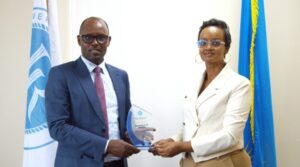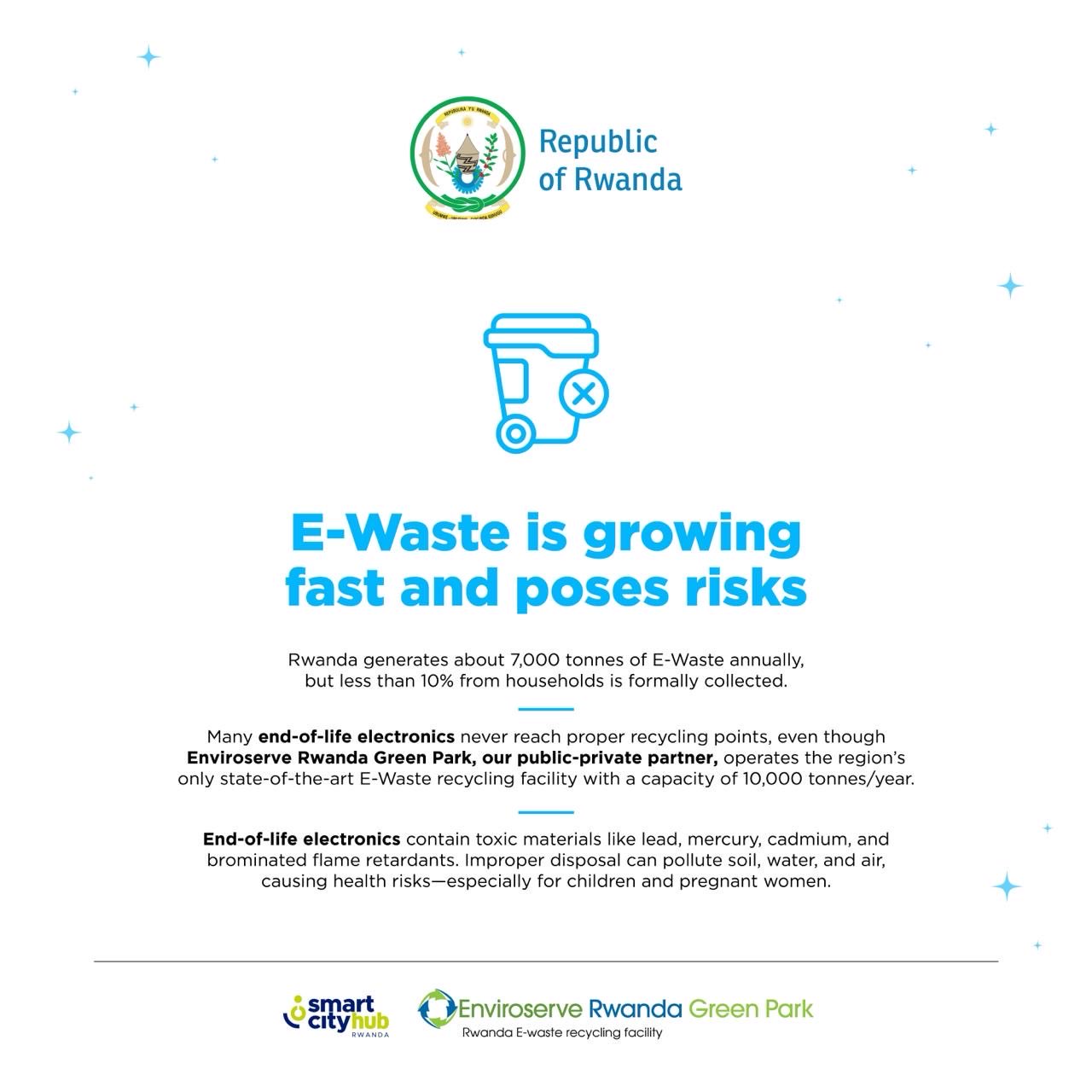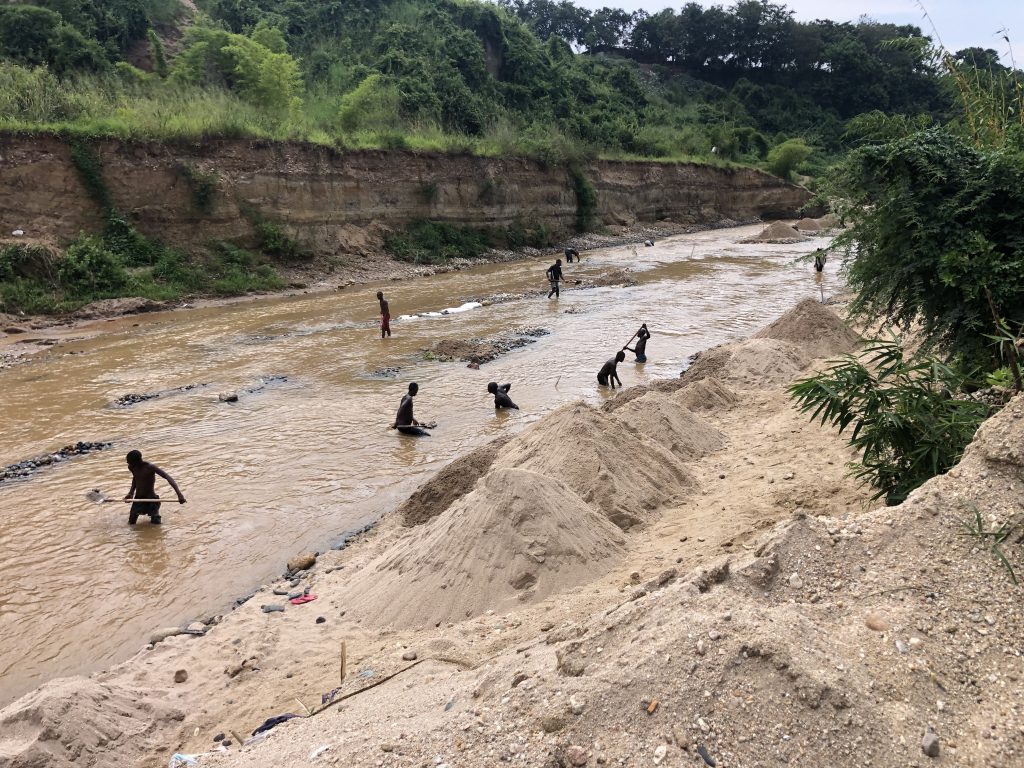
As urban centers swell in Kenya, Uganda, Rwanda and Burundi, mismanaged growth is endangering these cities’ aquatic lifelines
Most cities in East Africa are traversed by a river: a key resource that provides life-giving water for drinking, production of fish, and stability of ecosystems. But the future of East African cities is hanging in the balance, as these key waterways are endangered by unprecedented pollution alongside the impacts of climate change.
Rivers in Kenya, Uganda, Rwanda and Burundi’s main cities have become dumping grounds, overwhelmed by large quantities of waste and sand mining. Aquatic species are disappearing that are essential to the health of the region’s ecosystems and economies.
The main culprit is the influx of human beings – without the parallel establishment of strong and adapting management structures. By 2021, about 609 million people in Africa lived in urban centers, which is predicted to increase to 722 million by 2026.
The rapid population growth in these urban centers, if not well planned, hurts natural resources nearby. In particular, urbanization has been blamed for polluting urban rivers.
With support from InfoNile, Matilda Mbenywe, Joel Kaguta, Eric Twahirwa and Espoir Iradukunda investigated how mismanaged urbanization in Kenya, Uganda, Rwanda and Burundi are leaving the countries’ essential urban waterways in crisis, and what this could mean for the cities’ long-term health and economies.

Kenya
Kisumu’s cherished rivers in peril
We start in Kisumu, western Kenya, where the once-mighty rivers that have sustained Kisumu’s communities for generations are running dry, casting a looming shadow over the city and its surroundings. As climate change, urbanization, and unsustainable water management practices take their toll, Kisumu’s drying rivers have become a compelling symbol of the broader global water crisis.
For years, the rivers of Kisumu – the Winam Gulf’s gateway – have provided life’s essential element. Yet, today, the sight of parched riverbeds and receding waters has become all too familiar. In a region where water is not just a resource but a way of life, the consequences of this crisis are far-reaching and dire.
Kisat, Auji and Kibos rivers. Each in the past from the source was as breathtaking and unique as the landscape they quenched.
From the Maragoli Forest, the three rivers drain into the catchments of the Kodiaga and Riat hills. It is typical for the water at Riat and Kajulu to be cold, clear, and well-oxygenated.
Although climate change, population growth and agriculture threaten to shrink water supplies to crisis levels, these rivers serve 1.2 million people and an estimated urban population of 500,000 people in Kisumu county, according to the 2019 national census.

Villagers in Kajulu attest to have doubled the effort to keep the forest ecosystem intact.
This includes 60-year-old Josephine Aketch, who has drawn water from river Kibos all her life.
“The river has always been a source of livelihood for my family, but with time the water has decreased. While we do not cut trees, the amount and the flow of the river are continually declining,” she said.
“There has been a great deal of change in the water used for irrigation and a lot of developments that I believe are interfering with water quality.”
A tour along the course of the three rivers as they cut through the bustling industrial lakeside city presents a distressing sight.
Various kinds of garbage make their way into Lake Victoria. Among the visible waste are shoes, nets, and plastics that contain deadly chemicals.

A polluted River Auji that drains into Lake Victoria.
Environmentalists indicate that this poison is ingested by aquatic species and the hundreds of residents who depend on the river for drinking water.
Indeed, these rivers, like many worldwide, have been threatened by heavy pollution as they flow their way to empty in the second largest freshwater lake in the world.
A 2022 water quality assessment commissioned by InfoNile and conducted by the Water Resources Authority (WRA) indicates that pollution, including oil and grease, affects the biodiversity of Lake Victoria.
Chemical oxygen demand (COD), total coliforms, E. coli, lead, and oil and grease levels were found to be above recommended ranges at specific sampling points.
High pollution levels limit the diversity, abundance, and richness of aquatic species. The contamination has caused a decline in the population of water birds in the Lake Victoria ecosystem in recent years, according to the report.
The water quality assessment revealed contamination by lead- which is highly toxic to the human body- in areas around Kisumu railway harbor, likely originating from various sources such as “juakali” activities, industrial waste, and some types of fuel used by vehicles.
The presence of coliforms and E-coli bacteria in water indicates contamination by sewage or manure, posing a risk of water-borne diseases.
Incidences of water-borne diseases in Kisumu County, as per KHIS, have generally declined since 2017, but hepatitis showed an increase in 2020.
Moreover, water hyacinth obstructs the river flow as it approaches Lake Victoria.
According to environmentalists, the pressures faced by these rivers when they arrive in the city are many, and the waterways require careful management and protection to ensure the sustainability of this vital resource.
Patrick Odhiambo, an ecologist at Ecology Without Borders, noted that the highly polluted rivers that flow into Lake Victoria are a major source of waste that is poisoning the lake and seriously choking and threatening a variety of aquatic biodiversity.
He warned that aquatic life is at risk due to the direct intake of plastic waste and ingestion of poisonous chemicals that degrade their biological functions.
“The highly polluted rivers contribute a massive share of the waste poisoning the lake and threatening life in Lake Victoria waters,” Odhiambo said.
“This is an understatement because there are other undiscovered adverse effects of plastic on [aquatic]life.”
The expert further added that the situation was dire and required urgent action to prevent further degradation of the lake’s ecosystem. “We need to take immediate action to control pollution from industries, agricultural activities, and residential areas to save our [aquatic] biodiversity,” he said.
Polluted by sugar
River Kibos waterway is located in the western region of Kenya, near the city of Kisumu. It meanders through lush landscapes. However, this picturesque river is being threatened by the presence of a sugar factory in its vicinity.

A man at the polluted River Auji as it flows into Lake Victoria. This river, tainted by industrial waste, has become devoid of habitats for aquatic life and unfit for domestic use.
River Kibos has been at the center of controversies involving protests from residents over high levels of pollution.
The river’s course winds through vast sugarcane plantations that are part of a large-scale sugar production operation. Kibos Sugar and Allied Industries has the capacity to mill 480,000 tons of sugarcane annually that are sourced from both small and large-scale farmers in Kenya, with a daily processing capability of 3,000 tonnes.
It has 5,000 hectares of land and collaborates with outgrowers who cultivate sugarcane on approximately 100,000 hectares of land across Nyanza, Western, and parts of the Rift Valley provinces in Kenya.

Children engage in sand mining along River Kibos
Since September 1999, residents have frequently expressed their grievances against the Kibos sugar factory, alleging that the effluent discharged into the river poses a threat to their health and the wellbeing of their livestock.
Due to the persistent complaints, in March 2020 the National Environment Management Authority (NEMA) suspended the operations of a distillery and paper mill plant within the factory premises.
A deluge of sewage and industrial waste
The ongoing concerns over the pollution of River Kibos and Lake Victoria have brought issues of industrial waste management to the forefront.
According to a 2023 study published in BioMed Research International, Lake Victoria has suffered massive pollution from both industrial and wastewater discharge.

Animals drink in the polluted River Auji that drains into Lake Victoria
Microplastics, pharmaceutical residues, drugs of abuse, heavy metals, agrochemicals, and personal care products are found in large quantities in the aquatic ecosystem of Winam Gulf.
In Nyalenda slums along river Auji, investigations reveal that raw sewage is released directly into the river from the informal settlements of Nyalenda and Manyatta.
Resident John Omollo said the site of the river is unbearable, and the water is dirty beyond imagination. “I can no longer use this water for anything,” he said.
The residents expressed their disappointment at the authorities’ lack of response to their pleas.
“It is uncertain when this cycle of impunity will come to an end,” Omollo said.
Tom Togo, the Kisumu County NEMA Director, has expressed concern about the alarming levels of raw sewage being discharged into River Auji.
Kisumu, the third-largest city in Kenya, is facing a concerning water and sanitation crisis, notes the Environment and Social Impact Assessment for Kisumu Water Supply and Sanitation Project (ESIA) report.
The report reveals severe inadequacies in the existing infrastructure contributing to the discharge of raw sewage into the river near the informal settlements.
Data from this assessment also highlights that Kisumu Water and Sanitation Company Limited (KIWASCO)’s facilities are in a state of disrepair and cover only 40-50 percent of the urban population. The combined capacity of existing water treatment systems also falls short of the predicted demand, exacerbating water scarcity issues in the city.
In informal settlements such as Nyalenda and Manyatta, residents face inadequate water supply, relying on water kiosks and illegal connections. Alternative water sources, such as wells, are compromised due to poor wastewater management and insufficient waste and drainage systems.

A man looks at a busted pipe along River Kibos.
The sanitation facilities in Kisumu, as revealed by the data, also paint a grim picture. Ventilated Improved Pit (VIP) latrines, considered a better alternative to normal pit latrines, are utilized by only a meager seven percent of residents. The limited presence of public toilets, mainly in informal settlements and the city center, exacerbates sanitation problems.
The sewerage system, divided into three wastewater treatment districts, fails to cover a significant portion of the population, particularly in lower-lying areas like Manyatta and Nyalenda.
Data on solid waste management in Kisumu further underscores the city’s challenges. The daily generation of household waste has increased significantly over the years, reaching an estimated 437 tons in 2008.
Insufficient waste collection vehicles and poor waste management practices in peri-urban areas contribute to the proliferation of dumping grounds, blocking sewers and creating breeding grounds for disease vectors.
“There is a big problem with raw sewer being discharged into River Auji coupled with poor waste management,” Togo said.
Togo noted that the situation was dire, with aquatic organisms dying due to the pollution, and a pungent odor emanating from the river. He stated, “The living organisms in these rivers are dead; the water is highly polluted and cannot sustain life.”
Still, Togo acknowledged that many facilities had complied with waste management policies, leading to some improvements in water pollution control.
He said, “There is remarkable improvement and we are on constant lookout for companies and industries that will pollute our waterways.”
To address the problem in the informal settlements, Mr Togo recommended an improved sewer line system in the slums.

Kibos residents planting trees at River Kibos.
He made this statement at a time when the Lake Victoria South Water Works Development Agency (LVSWWDA), announced a significant €70 million (Sh8.8 billion) project aimed at expanding water supply in the region.
The project’s objectives are to enhance sanitation facilities to combat Lake Victoria pollution, increase water supply coverage from 67-90 percent, raise sewerage coverage from 16-45 percent, and reduce water loss from 45-25 percent by the end of this year.
He emphasized that this would help to curb the illegal discharge of harmful waste into the rivers. According to him, “It’s imperative that the county government extend sewer lines in the informal settlement to curb illegal discharge of harmful wastes in the rivers.”
Boniface Akatch, an activist, is pushing authorities to take decisive steps to regulate the discharge of effluent and ensure that industries comply with environmental standards.
“Much more needs to be done to protect the river, as many livelihoods depend on it,” Akatch said.
How wildlife are adapting
Shelton Were, an officer at Kenya Wildlife Service (KWS), observed that in a remarkable display of adaptability, wildlife species have been avoiding polluted rivers that flow into Lake Victoria.
Researchers studying the wildlife in the area have found that many species, including hippos, crocodiles, and various fish, have adapted to avoid the most polluted areas. Instead, they are congregating in cleaner waters or using alternative habitats.
“This is a positive sign for the ecosystem, as it shows that wildlife species are able to adapt to the challenges posed by pollution,” Were said.
He added: “It also highlights the importance of protecting and preserving the remaining clean water sources in the region, which are essential for the survival of these species.”

A woman fetches water from the polluted River Kibos in Kisumu.
However, the researchers also caution that the long-term impact of pollution on the ecosystem is still unknown, and further research is needed to understand the full extent of the damage.
Were said the lack of wildlife presence in the rivers flowing into Lake Victoria is a cause for concern, as it has a significant impact on the overall health of the ecosystem.
A decline in fish populations, for instance, is also affecting the livelihoods of local communities who depend on fishing for their income and food security.
Studies at Kenya Marine and Fisheries Research Institute (KMFRI) referenced by KMFRI officials show that over the last 50 years, the Kenyan side of Lake Victoria produced about 60,000 metric tonnes of tilapia annually, but currently, it barely musters 20,000 tonnes.

Children stare at the polluted Kisat River.
The bigger Nile perch has been more resilient because one Nile perch can produce 17 million eggs compared to tilapia’s 300 eggs.
But still, the production of Nile perch, which was about 340,000 metric tonnes a decade ago, has steadily dropped to about 200,000 metric tonnes, which KMFRI researchers attribute to pollution, climate change and unsustainable fishing practices.
Experts warn of a worrying decline in the lake’s fish population, which could have far-reaching consequences for both the environment and the local economy.
According to a 2010 report by the Moi University, Department of Fisheries and Aquatic Sciences, one of the main causes for the decline in fish populations is overfishing, which has led to the depletion of certain species of fish. Overfishing can also cause a decline in the size and quality of the remaining fish population.
Additionally, the report highlights the impact of pollution on the lake’s ecosystem. Human activities such as industrialization, agriculture, and deforestation have led to increased pollution levels in the lake, which negatively affect the water quality and aquatic life. Pollution can also cause algal blooms, which deplete the oxygen in the water and lead to fish deaths.
Climate change is another factor that is contributing to the decline in fish populations. Changes in temperature and rainfall patterns affect the breeding and migration patterns of fish, leading to a decrease in their populations.
Water rationing from climate change
Last year, impacts of climate change forced Kisumu Water and Sanitation Company (KIWASCO) to take painful short-term cuts in water use.
The Kisumu County Director of Environment and Climate Change Department, Evans Gichana, said the drastic measures by the water supplier were a result of rising temperatures and changing rainfall patterns, which are causing the rivers to dry up.
The climate in Kisumu is generally warm and overcast, with temperatures usually ranging from 18-31°C.
In February and March 2023, Thomas Odongo, the Managing Director of Kisumu Water and Sanitation Company (KIWASCO), revealed that the Kajulu water treatment plant, which abstracts water from River Kibos, was operating below its production capacity due to low water levels. In response, KIWASCO was supplying some water from the Dunga treatment plant to reach all customers.

Residents clean up River Kisat.
The director explained that the balancing exercise had resulted in partial supply interruptions in areas that were normally served from Dunga. He urged residents to conserve the available supply by using water sparingly and storing water during this period.
Odongo attributed the low water levels to the prolonged drought experienced in most parts of the country from January to April last year.
“We shall institute a distribution schedule if the situation persists and may introduce a water supply program using water bowsers,” he said.
Water bowsers, also known as water trucks or water tankers, are vehicles equipped with large tanks for transporting and distributing water. They are commonly used during dry seasons for various purposes to address water scarcity and meet the water needs of communities.
Due to erratic weather patterns, water rationing trends fluctuated throughout 2023. While heavy rains early this year resulted in a steady water supply, the long-term trend is unpredictable.

A man stares at the polluted River Auji that drains into Lake Victoria.
According to Gichana, rivers are among the most vulnerable areas to the increasing effects of climate change.
“We are seeing increased temperatures, erratic rainfall patterns, and prolonged droughts, all of which are contributing to the drying up of rivers,” Gichana said.
Gichana explained that the drying up of rivers could have severe implications for both the environment and communities that depend on them. He said, “Rivers are critical for the environment, providing habitats for fish and other aquatic life, and supporting the growth of vegetation. They are also a vital source of water for communities, and the drying up of rivers could lead to water scarcity, food insecurity, and health problems.”
Gichana emphasized the need for urgent action to address the effects of climate change on rivers.
“We all have a role to play in mitigating the effects of climate change on rivers. We need to reduce our carbon footprint, embrace sustainable practices, and protect our rivers and the environment for future generations,” he said.
Uganda
How urbanization is costing rivers in Western Uganda: pollution of River Mpanga in Fort Portal city
We travel next to western Uganda, where River Mpanga snakes through Fort Portal city, Kabarole, Bunyangabu, Kyenjojo, and Kamwenge districts before emptying into Lake George, a Ramsar site of international importance recognised by UNESCO.
River Mpanga flows for about 200 kilometers, with an altitude ranging from 914-1,700 meters.

This river plays a vital role in the existence and conservation of Kibale National Park, a forest that hosts one of the highest diversity and concentration of primate species in Africa. The river flows through different wetlands, which also play an essential role in maintaining the stability of the environment, biodiversity, flood mitigation and water quality.
Because of pollution and climate change, there are declining water levels observed in the river and Lake George most of the time, especially during the dry season. This has affected the nursery sites of some fish species, reducing the lake’s productivity, according to the 2009 Water Resource Assessment for River Mpanga.
This assessment shows that the discharge of organic wastewater is heavily impacting water quality in the Mpanga River downstream of Fort Portal city, home to more than 60,000 people. Further downstream, its water quality improves due to the purification capacity of Kibale Forest. But in Kamwenge, the turbidity (the cloudiness of the water) is at one of the highest levels in the whole country.
As the river flows from the ranges of Mount Rwenzori in Kabarole district, it is being polluted by several human activities, mainly in Fort Portal city, which has left many projects that depend on the water uncertain of their future.
These include a Shs 27 billion (USD $7 million) water for production project for Rwegaju located in Karangura sub-county, Kabarole; a National Water and Sewerage Corporation plant in Fort Portal; and the Mpanga hydropower plant located in Kamwenge district.

Without permission, many developers in Fort Portal have constructed structures along the river banks. This has contributed to the river bursting its banks during the rainy season, causing flooding.
As Mpanga River meanders through Fort Portal City, groups of people have established tree nursery beds, built washing bays along the riverside, and mined stones and sand, said Dr. Bosco Bwambale, an environmental lecturer at Mountains of the Moon University in Fort Portal.
Evalyne Mugume, the Kasese Municipal Environmental Officer, explained that homes adjacent to River Nyamwamba are polluting the river by constructing toilets within the river valley.
Mugume is worried that the pollution of River Nyamwamba does not affect not only the people within this valley but also the many who share water from the same river.
River Nyamwamba pours into Lake George and is connected to Lake Edward through the Kazinga Channel. These combine with Semuliki and Albert and are part of the Nile River basin, which stretches through 11 countries up to Egypt.

Increased Water Treatment Costs
The National Water and Sewerage Corporation (NWSC) Fort Portal branch authorities have expressed concern over the increasing operation costs to treat the water they get from River Mpanga, attributing the problem to river pollution.
“Previously, we had two water treatment units, but because they could not manage to continue treating water due to pollution, we were forced to build another water treatment plant at a cost of Shs 3 billion [about USD $760,000],” said Denis Muramuzi, the former Fort Portal NWSC branch manager.
He said water pollution is always high during the rainy season, affecting water quality and requiring many chemicals for treating water.
“At times, we are forced to close the treatment plant,” he said.
Muramuzi said they use 40 tons of sand annually, which they buy from Entebbe and use in the water treatment.
He also said that during the rainy season, they need to backwash the water treatment unit more than three times a day, which consumes a lot of electricity – costing about Shs 100 million (USD $25,000) a month.
The senior quality officer at the Fort Portal branch, John Onencan, said during last year’s rainy season from August to November, water treatment costs doubled from Shs 22-40 million.
Poor land use practices on riverbanks
The Team Leader of Water and Sanitation Regional Center 5, Ministry of Water and Environment, Sam Tusiime, said the pollution of the river is mainly due to poor land use practices on the banks of the river, which is affecting the water quality.
“[During] our recent assessment along the river Mpanga, we found out that many people don’t have toilets, which means there is open defecation, and our water treatment plants are always overwhelmed by dirtiness. We have recommended that people should stop staying in buffer zones of the river of 50 meters,” he said.
In Fort Portal City last year, the authorities embarked on restoration plans to conserve river Mpanga and other city wetlands by demolishing all illegally built structures.
The Fort Portal city senior physical planner, Samuel Musana, said many developers had been served with notices and warnings to stop their construction in the river banks of Mpanga in vain. He said most developers do not have building plans or environmental impact assessment reports that have been approved by authorities.
Therefore, the government decided to start an operation to demolish all illegal structures along the riverbanks, said the senior environment officer of Fort Portal City, Gladys Natugonza Mirembe.
“All those people who don’t have river bank user permits, their structures along the river Mpanga have been demolished; we are continuing to give others notices such that they can stop their activities,” she said.
Some of the structures demolished were at Hakabale near river Mpanga.
After the elevation of Fort Portal’s status from a town to a tourism city in 2020, the city has been experiencing several infrastructural developments. However, without proper environmental planning, some of these are threatening the survival of local wetlands.
NEMA laws state that any development must be implemented at least 100 meters from any water body or wetland.
In less than five years, wetland encroachment has increased as the city has expanded, with Kitembe, Rwengoma, and Butangwa wetlands most affected.
Other gazetted wetlands facing encroachment include Nyakimya, Nyadoi and Kalamaga.
Residents said that the weather pattern in the area has changed drastically in the last five years, exacerbated by the continued degradation of wetlands.
In the past years, the area used to experience fog from morning up to midday and a lot of rain throughout the year. These days, it is no more as climate change takes its toll.
The newly drafted Fort Portal city physical development plan, once completed, will help zone the city by identifying proper places for urban settlements, agriculture, crop specialization, industry and manufacturing activities, minerals development, tourism development and natural resources conservation.
Muramuzi, the former Fort Portal NWSC branch manager, said they are also now partnering with city leaders and NGOs to plant trees along the river banks.
Decades later, toxic waste persists from Kilembe copper mines
It is about 40 years since the mining of copper at Kilembe Mines in Bulembia Division of Kasese Municipality was halted due to political instabilities and price fluctuations.
But up to now, a person who was born 40 years ago within the valley is still suffering the penalty of toxic waste.
Several research studies have shown that high levels of metal concentrates, including copper, cobalt, nickel, zinc, and arsenic, remain present in agricultural soils and public water sources.
Dr. Abraham Mwesigye, an environmental toxicologist at the College of Agriculture and Environmental Sciences at Makerere University, discovered that the wastewater from the Kilembe mines was not treated to remove heavy metals, exposing the environment to contamination. This researcher believes that the minerals are endangering the community, livestock, and environment within the valley.
Dr. Bosco Bwambale from Mountains of the Moon University also said the Kilembe mines played a significant role in polluting the river.
About 15 dumping sites for copper tailings were established to pile the residuals during the mine’s good production period until production was halted in 1982.
But, quite often, copper tailings eroded into the rivershed when Nyamwamba burst its banks. Alex Kwatampora, the former Manager for Tibet Hima, a Chinese company that won the concession to revamp the mine, said about 1.2 million tons of copper tailings from Dam C were eroded into the river. According to him, this posed a significant threat to the water system.
Kwatampora, who doubles as the managing director for Mpora Geo-tech Consultants Limited stationed in Kasese, added that research studies he contributed to also show high levels of metal concentrates, including copper, cobalt, nickel, zinc, and arsenic, present in agricultural soils and public water sources.
Such untreated toxic waste from the Kilembe mines has continuously joined the main river, even years after the mines closed. This poses a health threat; slowly, stones within the river valley are becoming yellowish and blackish.
Pollution caused by the mine is not the only polluter of Nyamwamba. There are also a lot of agricultural activities, damming, and sand mining within the rivershed.
Kwatampora explained that the continued disposal of untreated industrial effluents in the river channel is further worsening river quality.
“The oxygen in the Nyamwamba River does not meet standards due to industrial and agricultural discharges,” Kwatampora said.
When our reporter visited the river, he saw women and children washing their domestic utensils such as saucepans and clothes in the river without fearing they would be implicated or arrested.
The families live about two meters away from the flowing river.
Jonoles Muthethu, an elder, said that washing in the river has been a common culture for decades, and they have never seen anyone cautioning them. “Me personally; I have been coming here to wash my clothes and plates; why are you asking me?” Muthethu said.
Uganda’s National Environment Act No. 5 of 2019 mandates citizens to protect the 200-meter buffer zone next to water bodies.
However, enforcement of this law by the National Environmental Management Authority (NEMA) and police has yet to be well implemented along the river channel.
Peter Baluku, a resident of Nyamwamba East in Kasese Municipality, said lack of enough land presents a big challenge.
“People have not enough pieces of land, so living a distance of about 200 meters away from their land just to protect the river cannot be applicable,” Baluku said.
Kasese district is prone to dryness, which pushes people closer to the rivers to look for moisture that can support their subsistence farming.
This has prompted farmers to use pesticides when climatic conditions vary. The consistent use of fertilizers is also posing a significant threat to downstream water bodies including Lake George.
Bwambale said that prevention is cheaper than treating the water when it is already polluted. According to Bwambale, below river Nyamwamba, there is another water body that cannot allow water that flows there to be treated, since it will threaten the aquatic life in the water body.
Bwambale further attributed the flooding of River Nyamwamba to soil erosion, which causes siltation that makes the river become shallow. Bwambale says this issue makes it easy for even a little precipitation to cause riverbanks to burst.
Selevest Kule Walyuba, a conservationist, proposed that the people neighboring rivers should be trained on how to apply sustainable farming to avoid accelerating water runoffs, which are polluting rivers in the district.
Dr. Bwambale implored the National Environment Management Authority to sensitize farmers about their roles in polluting the river and how they can prevent it.
Rwanda
A River With Almost Dead Water: What Next for Nyabarongo River?
We travel south to Uganda’s smallest neighbor: Rwanda, a green country of many hills, lakes and rivers. Emmanuel Bunani, a resident of the capital city of Kigali, is at a loss for words for what occurred in a river that was once a source of livelihood for many.
“Ten years ago, we would get fish from this river. Some of us survived because of this river, but that is no longer true. We can’t get any fish. I don’t know why,” he said.
What used to be a source of water and fish is now a host to a wide range of pollutants including industrial, garage, domestic, and mining sector waste.
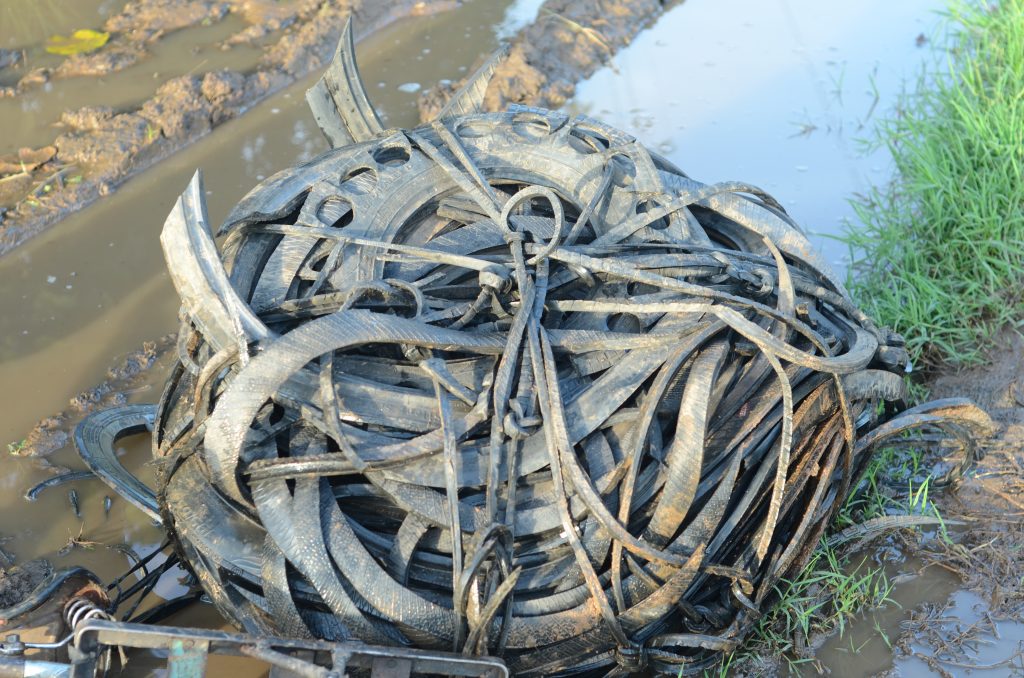
Tryes’ wastes from garages are around Nyabarongo River
This level of pollution is worrying experts such as Dr. Joseph Kanyeshuli – a lecturer and researcher at the University of Lay Adventists of Kigali, who observed that if Nyabarongo continues to take in industrial and garage wastes from Kigali city, it risks having dead water (water without oxygen) where biodiversity cannot thrive.
He attributes the low production of fish in this river to this phenomenon and warns that such water harms biodiversity and human beings.
According to Kanyeshuli, waste depletes oxygen in the water, which may affect the life of people and biodiversity, including fauna and flora around and inside it.
“No one can predict the future of Nyabarongo because it has become an unplanned recycler of Kigali City,” he observed.
Who is Polluting Nyabarongo?
The Nyabarongo River is part of the upper headwaters of the Nile River.
With a total length of 351 kilometers, it is the longest river in Rwanda. It extends to Lake Rweru, to the upper course of the Kagera River before joining into Ruvubu River to form the Kagera River. Kagera River empties into Lake Victoria, which is the source of the Nile River.

Today, the river is polluted with industrial waste, garage waste, household waste, and waste from the butcheries of Kigali.
This is exacerbated by garbage from the 14 mining sites along the river before it reaches Kigali city and the rampant soil erosion along the river course.
According to a 2021 study by the Democratic Green Party of Rwanda, rivers in Rwanda carry about one million tons of eroded soil per year, with the Nyabarongo River alone carrying 400 tons.
According to Dr. Emmanuel Rukundo, the Director General of Rwanda Water Board, unless soil erosion is tackled, the lives of people who depend on the Nyabarongo River will remain at risk due to water pollution.
“Agricultural activities along the river banks are the key drivers of soil erosion into the river. The eroded soil pollutes the water, making it unsafe for human use. Erosion even increases the cost of water treatment at points like the Nzove water sanitation center,” Dr. Rukundo explains.
Pollution from Kigali City
Kigali city is home to about 1.4 million inhabitants, according to the 2022 Rwanda population census, and its population is growing at more than 4 percent per year.
The city faces significant challenges with waste management, with the recycling rate at only about 10 percent, according to officials at Rwanda Environment Management Authority (REMA).
The population is culpable of dumping waste in the Nyabugogo swamp and its channels, which flow directly into the Nyabarongo River. This contributes about 48 percent of the total pollutants of this waterway, according to the Democratic Green Party of Rwanda.
“We throw waste into the water because there is no proper dumping place and also due to the high costs of waste management in Kigali. We decided to do it as the last option. Still, we don’t know the effects of this waste on the river,” says Nsabimana Augistin, a resident of the Muhima Sector in Nyarugenge district along the river.
Though Kigali city has the Nduba dumpsite for waste collection, handling waste at this facility could be improved, and it often finds itself in the Nyabarongo River.
Dr. Abias Maniragaba, an environmentalist and researcher, observes that “Nduba contributes to pollution of Nyabarongo. When it rains, wastewater and solid waste filter into the river. No one seems to care about this, but the effect of this pollution on water and its biodiversity is significant.”
Dr. Maniragaba also notes that apart from pollution from mines and households, garages (13 percent) and industries (16 percent) are among the mega sources of pollution in the Nyabarongo River.
With a polluted river that contributes water to Lake Victoria and the Nile River, the Nile basin population remains at risk of waterborne diseases and loss of biodiversity.
However, not all hope is lost. According to Dr. Kanyeshuli, the community is determined to work with the government to conserve Nyabarongo water and its environs for the current and future generations.
Since 2008, Rwanda has been collecting biodegradable and non-biodegradable wastes from cities. Most of the non-biodegradable wastes are recycled into various environmentally friendly materials such as baskets, mats and decorations.
Burundi
The sloshed Rivers
Finally, our journey takes us southward to Burundi, Rwanda’s southern neighbor and the host of the most distant source of the Nile, the Ruvyironza River that flows from Mount Kikizi. Bujumbura, the country’s capital city, lies in the west of the country on the northernmost tip of Lake Tanganyika, which is shared by DRCongo and Tanzania.
Of the six rivers paving the way to Lake Tanganyika, three of them experience hefty human pressure, including Ntahangwa in the north, Muha in the central and Kanyosha, which is south of Bujumbura.

On these are added Mutimbuzi, Kinyankonge and Nyabagere rivers, which flow into Lake Tanganyika, which is the second-largest lake by volume, second-oldest freshwater, second deepest, and the longest freshwater lake in the world.
Environmentalists report that rivers in and around the capital city of Bujumbura are under extreme pressure due to various kinds of human activities, the most disastrous being indiscriminate extraction of construction grade sand.
In the Kanyosha watershed, according to a 2018 assessment by the MATEC Web of Conferences, several landslides have been causing costly damage.
These landslides are naturally occurring but also induced by heavy rains and excavation of building materials from the riverbed.
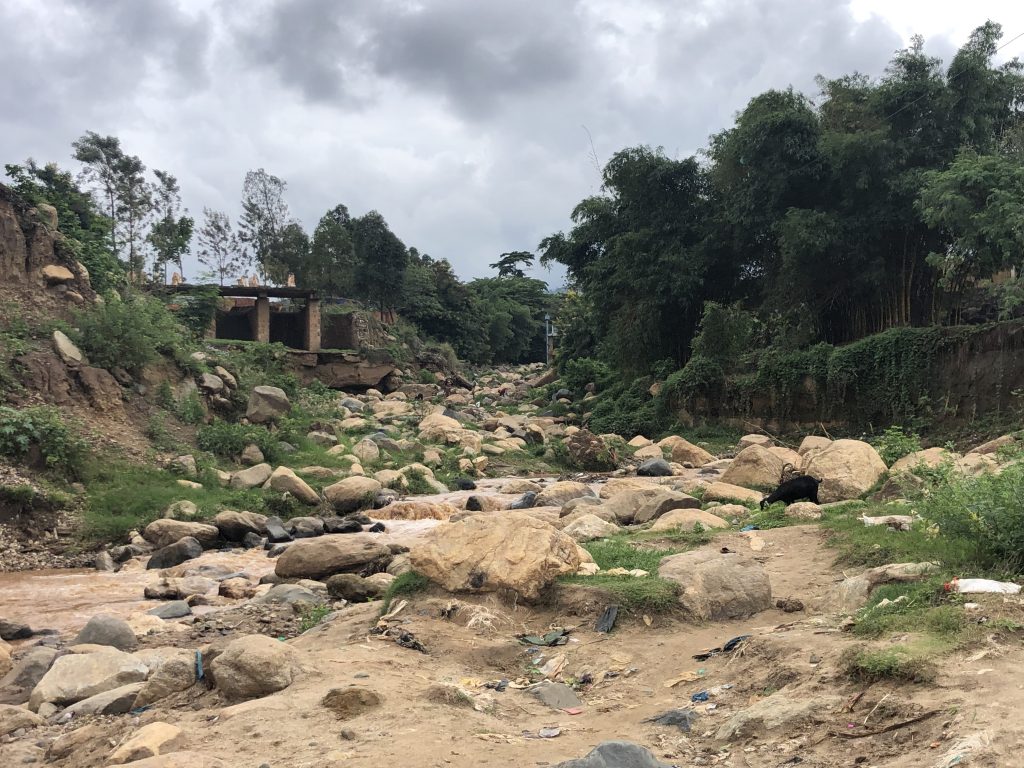
This research reported that the main problem resides in the sustainability of roads, schools, irrigation canals, houses, and crop fields, which are in danger of collapsing.
Economic experts report that billions of Burundian francs have been injected to repair damages, resettle people and pay unwanted insurance.
“The government must pay its duties and search for new shelter for people hit by any occurring disaster,” said Prosper Niyoboke, an economic expert and former dean of the faculty of sciences at Lake Tanganyika University.
He said that environmental crises have caused a major loss of human lives and infrastructure.
Governmental institutions, local and international NGOs and technical institutions must take tangible actions to combat or control illegal activities in river beds, added Muyoboke.
KANYOSHA
According to Claver Sibomana, a lecturer and researcher in the Faculty of Sciences at the National University of Burundi, Kanyosha river is Bujumbura’s most polluted river compared to Ntahangwa and Muh, because it drains through fast-developing urban neighborhoods.
From the north, this river flows first through Kamesa, which is the most populated quarter with the highest poverty levels, followed by Musama and Kinanira localities, and at last Kibenga and Gisyo localities before draining into Lake Tanganyika.

Around 10,000 families depend on the river for their livelihoods.
According to Sibomana, many children, women, and men gain livelihoods by sand mining or breaking stones. Others who cultivate legumes such as amaranths and onions irrigate their crops from the river year-round using basins, jerrycans, or baskets.
The miners sell the sand to construction companies in Bujumbura, which use it to build houses.
Mahoro Jackson, a 34-year-old sand miner, moved to Kanyosha river back in 2002. At the time, the river was just one meter wide. But today, the riverbed can widen to about 100-150 meters with a slope exceeding 50 meters: an effect of indiscriminate sand mining.
“Approximately, I can easily mine two or three sand trucks (bens) each day, and depending on the quality I get, I make between BIF 50,000 (around $20) and BIF 150,000 (around $50). If we consider the number of registered sand miners, around 400 bens are daily discharged from the river,” said Mahoro.
Because of the excavation of protective soil and vegetation, the riverbed fails to contain rapid water flowing from the foothills of Kanyosha river, according to Engineer Marc Rugerinyange, a project coordinator at EIS-EKA Group, a local construction company that builds roads and bridges, and protects riverbanks.
“The Kanyosha river rage starts upstream in the foothills overlooking the city of Bujumbura. These mountains influence the rainfall dynamics. The soil is not protected by vegetation cover as trees [by the riverbanks] are cut in search for good sand. If it rains, the water does not infiltrate. It flows with a very high pressure and carries away everything it meets in its path,” he said.
He added that as nothing stops the force of the water, the banks become fragile.
“The speed of the water becomes excessive, destroying the banks and widening the bed as small and big stones that protect the river are removed,” Rugerinyange said.
Anne-Marie Nahayo, 28, who spoke to InfoNile while extracting sand, said that her community has been depending on the river for decades. Sometimes in the rainy season they spend three days or longer without sand mining when the wrath of the Ntahangwa erupts.
“In April, I remember it rained all night. No one came. We remained at home,” she said.
“There are times when officials come to stop us, fearing what might happen. For example in September 2020, the Ministry of Environment suspended our activities because many sand mining cooperatives were not accredited and extracted prohibited types of sand. Those who were found guilty paid heavy taxes and fines,” Nahayo said.
There are about 500 sand extractors in the area, a number that continues to grow, she said. The miners are grouped in small cooperatives and pay between BIF 200,000-500,000 (USD $70-175) for membership.
NTAHANGWA
Sand mining has also widened the Ntahangwa and Muha rivers, located north of Kanyosha in Bujumbura. For the Ntahangwa river, in some areas between Mutanga North and Mutanga South, the riverbed is more than 100 meters long with a slope of more than 20 meters.
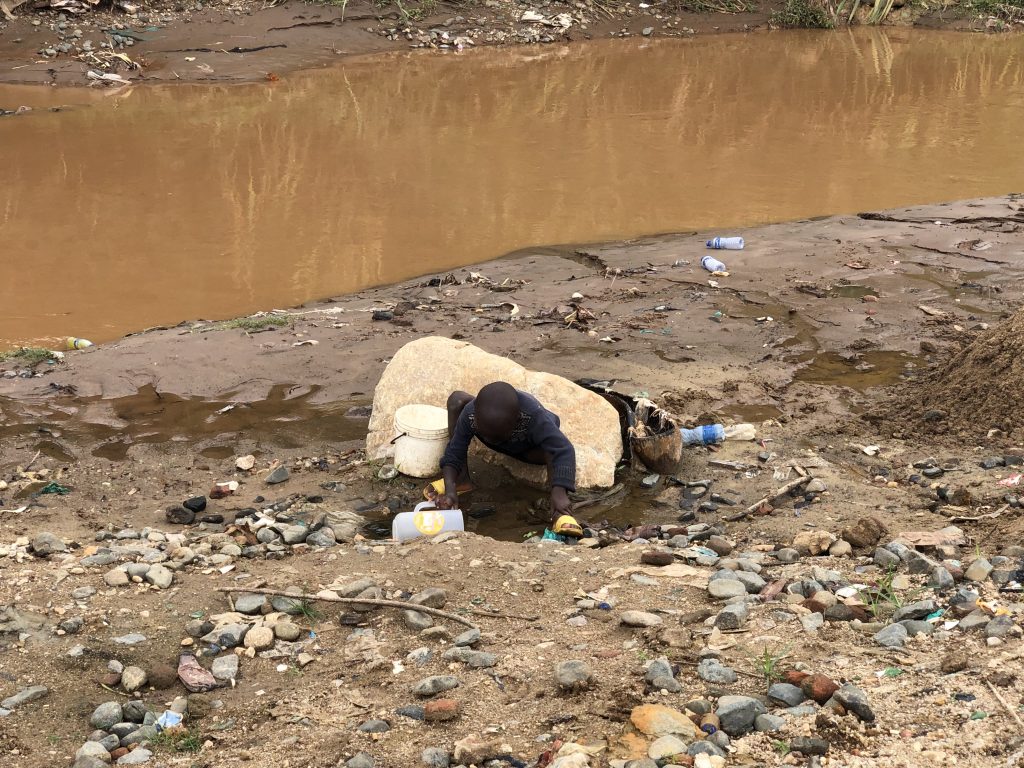
In the 1970s, according to Jean Marie Sabushimike, environmentalist and geography lecturer at the National University of Bujumbura, the river was less than a meter wide. Today, he said, in some areas the bed river goes up to 150m while the slope can reach up to 50m.
In the Mugoboka area, infrastructure including schools, individual houses, and hospitals have been destroyed.
The same state applies to not only Ntahangwa river but also to Muha river that stretches throughout the neighborhoods of Rohero and Gasekebuye, Kinanira and Kabondo East and West to Kinanira rural.
However, compared to the Kanyosha river, illegal activities in these rivers are minor because these waterways are protected by forests.
Still, according to environmental expert Céleus Ngowenubusa, the river is affected by excessive erosion in the northern part. This, along with heavy rains due to climate change, has caused torrential streams and devastating floods.
“The terrain remains unsheltered by tree and shrub cover. The structure of the soil and the steep curves make the runoff index higher than the absorption index. Without anything to stop the force of water, we always have floods that destroy everything in its path,” he said.
When the runoff index is high, the water absorbed by the river is less than that which passes, contributing to floods.
According to Sabushimike, as a result of indiscriminate sand mining, the riverbed in the storage zone has lowered at a rate of 7–15 centimeters per year over the past two decades. This, in turn, imposes severe damages to the physical and biological environments of these river systems. For example, no fish species can be found as the riverbed extension is clear, the environmentalist Sabushimike said.
The damages are worsened by pollution of solid and liquid wastes as the three rivers serve as dumping sites due to a lack of urban planning.
MUHA
Local NGOs, the Burundi National Defense Force, and some well-resourced individuals living near the riverbanks have launched activities to protect the rivers. These include planting bamboo, draining long canals, and appointing guards to report any suspicious activity at the lake junction of the three main streams that flow through Bujumbura city. However, whenever it rains, ridges tend to crumble.
According to Engineer Marc Rugerinyange, as stones and gravel are heavily extracted, water ricochets on the sand ridges and then destroys nearby houses and schools.
“I was forced to relocate,” said Nadine Nzeyimana, a mother of two. But those who did not have a place to go had to stay and remain in the danger zone, she said.
Another resident of Rweza, Nshimirimana Louis, said that his plot of land was decimated by river enlargement. “Of 100 cubic meters, I hardly remain with where my house is built only,” he said.
In the South, Muha river overflowed in Kibenga Lac, where more than 200 households have been disturbed since 2020.
Some residents said they throw stones on sand miners to show their frustration for over-extracting the river bed.
“Extractors migrate from North to South; the whole riverbed is no longer the same,” said Asumani.
More than 500 people are registered as sand miners in the south of the river, whose families depend on the Muha riverbed for their livelihoods.
Graph : chemicals in rivers :
Tanganyika
Bujumbura’s three main rivers end up in Lake Tanganyika, depositing tons of soil from erosion and chemicals from waste. They have contributed to an increase in temperature rise in Lake Tanganyika, eutrophication and a two meter increase in the water level, which reached 777 m in 2021.
According to Mark Olukotum, Research Officer and Program Leader at Fish Management Program in the Uganda National Fisheries Resources Research Institute (NaFIRRI), eutrophication refers to the process by which a body of water becomes overly enriched with nutrients, typically nitrogen and phosphate, which often come from agriculture.
“It leads to excessive growth of algae and other aquatic plants. The phenomenon can result in harmful algal blooms, oxygen depletion, and disruptions to aquatic ecosystems,” said Olukotum in February during InfoNile’s 10th NileWell Science Wednesday event, a monthly webinar that brings together journalists and environmental scientists.
According to experts, the changes in the lake are threatening survival of fish species. In 2000, the lake’s temperature varied between 24 and 28oC. Ten years later, it recorded an increase of 1oC, according to environmentalist and lecturer at the National University, Jean Marie Sabushimike.
Hydrogen potential (pH) also grew from 7.1-9.0 to 7.5-9.5. This, according to Nzigiyimpa, has made it difficult for fish species to lay eggs near lakeshores due to a decrease in oxygen levels.
Graph : Tanganyika’s physico-chemical properties
According to a 2022 research study conducted by Tanzania Fisheries Research Institute and the University of Dar es Salaam, eutrophication of these key water resources poses a number of potential risks to human and aquatic life.
This research also added that freshwater ecosystems like Lake Tanganyika provide a wide range of ecosystem services and yet are under increasing pressures linked to land use and demographic change as well as economic development.
“Widespread human alterations of element cycles through improper wastewater treatment, unsustainable agriculture and insufficient management of storm-related pollution events have led to increases in nutrient pollution and a general eutrophication of a large percentage of lakes and smaller lentic ecosystems,” the research reported.
“You see,” says Nzigiyimpa, “fish come to lay eggs on the lake’s bank, but since this is where phosphate is massed, it is impossible to come nearby.
“In case Ntahangwa, Muha, Kanyosha, and other affluents flood, females run away. In some cases even the layed eggs die,” he said. This has affected fish harvest in the lake.
Again, when Lake Tanganyika bursts its bank, it hurts the lake fish species. Most of them are stranded. They die offshore, Nzigiyimpa said.
According to a 2022 research by the Tanzania Fisheries Research Institute, anthropogenic pollution plays a large role in deteriorating the water quality of rivers, especially in urban areas of Africa where water quality monitoring is still seriously constrained by the limited test facility and capability.
“Deterioration of surface water in less developed countries is caused mainly by urban population–related pollution rather than by agricultural or industrial pollution,” the research concludes.
Also, since populations are still growing rapidly, it is bound to bring about a great pressure on water quality and degradation of rivers.
For example, the research says the eutrophication of Lake Victoria impacts the water quality of the surrounding cities such as Jinja, Kampala, and Kisumu.
According to researcher Mark Olukotum, urbanization in the catchment is a main contributor at 3.8% per annum, as well as algal bloom referred to as cyanobacteria in Lake Victoria.
Restoring the Rivers
Mark added that possible solutions include climate-smart strategies to reduce the amount of waste entering water bodies, control discharge by collecting it for reuse as well as improve treatment processes in catchment areas.
“There is a need for a holistic approach by combining efforts to develop the interconnectedness of various aspects of the environment and society and seeking to balance economic, social, and environmental well-being,” he said.
In Burundi, a few efforts have been implemented by governmental and nongovernmental entities including the European Union, Rotary Club and Red Cross to clean water bodies.
“Together, we must refuse to allow our rivers, ditches, roadsides, public gardens and, above all, the shores of our rivers and lakes to be transformed into garbage dumps that no one can control,” said European Union Ambassador to Burundi Claude Bochu during a beach cleanup initiative in September 2023.
“So let’s act together and learn to change our behavior. Let’s learn to sort our rubbish and put it in the right places; let’s also learn to reuse packaging, to recover or repair used objects,” Bochu said.
Local organizations such as Ishaka 250, along with the Ministry of Environment, have invested in afforestation projects, including the “ça nous concerne tous” association that provides trees nationwide, Ishaka 250 and Kage Green Economy, which collects and recycles items including plastics, kitchen leftovers, and other items found in the dumpsites.
In addition, environmental experts urge the government of Burundi to limit sand mining in a given period of year, impose heavy fines to discourage cooperatives that breach the environment code, and draft tough measures on license acquisition.
Environmental advocates proposed that the government should forbid any construction activities up to 150 meters from the river. Also, they proposed providing alternative income measures for anyone who stops sand mining.
“The government should strengthen rules and regulations especially to associations that want permission to exploit riverbeds. For example, obliging them to provide clear plans on how to protect the environment or how they will execute restoration after a given period,” Nzigiyimpa said.
Credits:
Reporting: Espoir Iradukunda in Burundi, Joel Kaguta in Uganda, Mactilda Mbenywe in Kenya, and Eric Twahirwa in Rwanda.
Editing: Annika McGinnis and Fredrick Mugira
Photography: Espoir Iradukunda, Joel Kaguta, Mactilda Mbenywe, and Eric Twahirwa.
Data Visualizations: Primrose Natukunda
Graphics: Jonathan Kabugo
Design and IT Support: Rogers Mukalele and Delicate Sive
Communications: Curity Ogada and Delicate Sive
Project Coordination: Annika McGinnis, Ruth Mwizeere and Primrose Natukunda
This story was supported by JRS Biodiversity Foundation.






